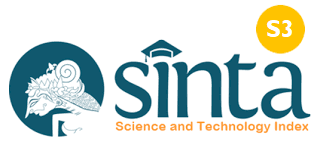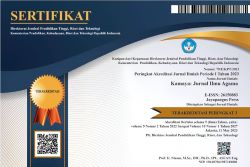Gurukula Bangli Sebagai Representasi Pendidikan Hindu Kuna
Abstract
This paper is an description for the existence of Gurukula contained in Bangli. The Gurukula system is seen as an educational system that is represented as a form of ancient Hindu educational methods. Ancient Hindu education which has been viewed as a method that is not developed, but in fact Gurukula present as a place of education in line with Hindu literature such as Upanisad and Dharsana. It also attempts to reveal the formation of a very religious character to the sisya Gurukula through the sisya method of staying with the teacher within the prescribed time period. In addition, in this paper also reveals a moral pembentuka against sisya, so that education Gurukula can be said almost similar to informal education contained in the family. The phenomena were then dissected using the theory of Thorndike Connectionism and presented descriptively qualitatively. This paper can be a new paradigm in the planning and determination of a learning method applied in the world of education, especially Hindu religious education.
References
Sasmito, Eko. 2016.“Implementasi Kurikulum Tersembunyi dalam Pengembangan Karakter Siswa Hindu”. Prosiding Seminar Nasinoa. ATL. 1. 93-98.
Hadisubroto, Subino Subino. 1992. Pentingnya Pendidikan, dalam Keluarga dalam Hakikat Tujuan Pendidikan Nasional.cet:1. Bandung: University Press IKIP.
Hoed. Benny, 2008. Semiotik dan Dinamika Sosial Budaya, (Depok: Fakultas Ilmu Pengetahuan Budaya.
I Gede Sura, Pengendalian Diri dan Etika dalam Ajaran Agama Hindu. (Surabaya: Paramita, 2013).hlm. 28-30
Michael Novak, Crime and Character, This World(Musim semi/Musim Panas, 1986) hlm.1.
Miswanto, 2008. Dunia Pendidikan dalam Perspektif Hindi. Dalam: https://www.scribd.com. Diunduh: 30-09-2014.hlm.1
Paulo Friere. Pedagogi Pengharapan. Cet.1.(Yogyakarta: Kanisius, 2001).hlm.10-13
Sudarsana, I. K. (2014). Membangun Budaya Sekolah Berbasis Nilai Pendidikan Agama Hindu untuk Membentuk Karakter Warga Sekolah. In Seminar Nasional (No. ISBN: 978-602-71464-0-2, pp. 69-75). Pascasarjana IHDN Denpasar.
Sudarsana, I. K. (2015). Inovasi Pembelajaran Agama Hindu di Sekolah Berbasis Multikulturalisme. In Seminar Nasional (No. ISBN: 978-602-71567-3-9, pp. 94-101). Fakultas Dharma Acarya IHDN Denpasar.
Thomas Lickona, Pendidikan Karakter: Panduan Lengkap Mendidik Siswa Menjadi Pintar dan Baik, cet.II.(Bandung: Nusa Media,2014).hlm.75-79.
Tjok Rai Sudharta dan Ida Bagus Punia Atmaja, Upadesa Tentang Ajaran-ajaran Agama Hindu. Cet.1.(Surabaya: Paramita, 2001).hlm.48
Toto Suharto. Pendidikan Berbasis Masyarakat, cet.I. Yogyakarta:LKIS.2012.hlm.v.
William Damon, The Moral Child.( New York: The Free Press, 1988).BAB “Parental Authority And The Rules of the Family.
“Inspired from Agus Indra Udayana, 2016. System Education Gurukulas”
Downloads
Published
How to Cite
Issue
Section
License
An author who publishes in the Kamaya : Jurnal Ilmu Agama agrees to the following terms:
- Author retains the copyright and grants the journal the right of first publication of the work simultaneously licensed under the Creative Commons Attribution-ShareAlike 4.0 License that allows others to share the work with an acknowledgement of the work's authorship and initial publication in this journal
- Author is able to enter into separate, additional contractual arrangements for the non-exclusive distribution of the journal's published version of the work (e.g., post it to an institutional repository or publish it in a book) with the acknowledgement of its initial publication in this journal.
- Author is permitted and encouraged to post his/her work online (e.g., in institutional repositories or on their website) prior to and during the submission process, as it can lead to productive exchanges, as well as earlier and greater citation of the published work (See The Effect of Open Access).
Read more about the Creative Commons Attribution-ShareAlike 4.0 Licence here: https://creativecommons.org/licenses/by-sa/4.0/.





